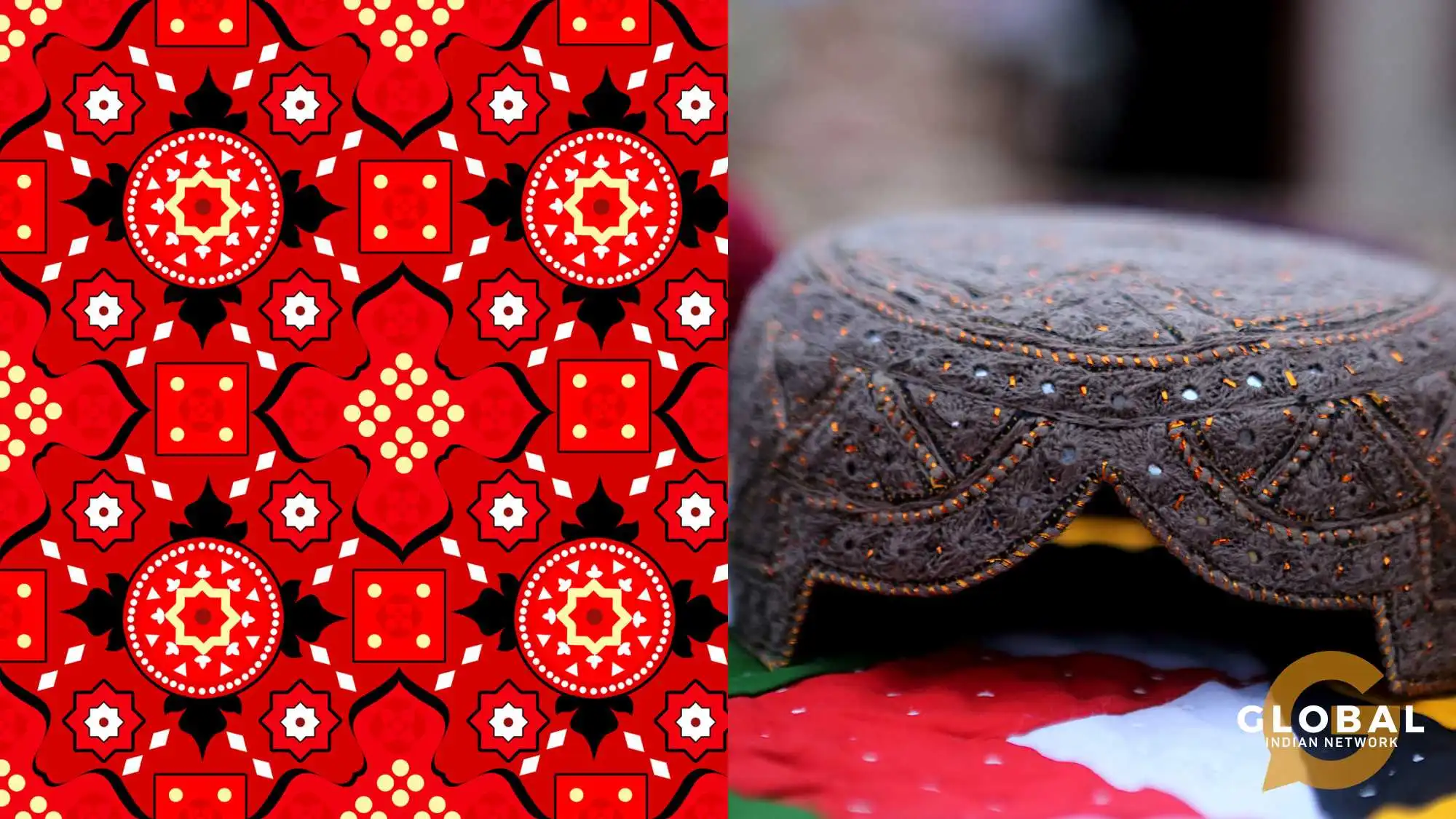Discover the rich culture of the Sindhi community with these five surprising facts. From their vibrant cultural traditions to remarkable contributions, delve into the lesser-known aspects that define this dynamic group. Uncover the untold stories and unique characteristics with fascinating facts about the Sindhi community that shape their identity.
Table of Contents
Location
The current provincial capital of Sindh is Karachi. It is located on the Arabian Sea coast and is the largest city in Pakistan. It is the third-largest province in Pakistan by land area and the second-largest by population. Sindh derives its name from the "Indus River," its original and primary identifier. This name has undergone various phonetic iterations throughout ancient history, all stemming from the fundamental term "Sindh." Geographically, the province shares borders with Punjab to the north, Thar to the east, and Balochistan to the west, while the Gulf of Kutch marks its southern boundary.
Listen To This Podcast: Remembering the Past: Unveiling the Untold Stories of the Sindhi Diaspora with Saaz Aggarwal
History
The Sindhi community's history stretches back millennia, deeply intertwined with the land of Sindh in present-day Pakistan. Their roots trace back to the Indus Valley Civilization, flourishing around 3300 BCE. Throughout history, Sindh served as a vital crossroads for trade and cultural exchange, influencing the development of the Sindhi people and their unique identity.
Sindhi culture thrived under various empires, including the Mauryan, the Mughal, and the Kalhora dynasties. This rich history is reflected in their distinct language, Sindhi, one of the oldest Indo-Aryan languages, and their vibrant cultural diversity. Historically, Sindh was a land of diverse faiths, with Hinduism, Islam, Sikhism, and Jainism coexisting peacefully for centuries. This unique blend of religious influences is evident in their festivals, music, and art forms.
The presence of powerful empires in various South Asian regions marked the 11th century. The Ghaznavid Empire and later the Delhi Sultanate were influential in North India. The 14th century witnessed the continued spread of Islam in South Asia. Sufi saints played a crucial role in promoting Islamic teachings and practices, leading to conversions and influencing existing religious and cultural spheres.
The 16th century marked a significant period in the history of the Sindhi community, characterized by the presence of a renowned figure, Shah Abdul Latif Bhittai, a revered Sindhi mystic poet widely regarded as the "Shakespeare of Sindh". Born in 1688, his magnum opus, "Shah Jo Risalo," is a collection of Sindhi Sufi poetry deeply embedded in Sindhi culture. His poems explore themes of love, devotion, and social commentary, leaving a lasting impact on Sindhi literature and identity and the ongoing presence of Muslim rule in the region.
A turning point came in 1947 with the partition of India. Facing widespread violence and persecution, millions of Sindhis were forced to leave their ancestral homeland. This mass displacement marked a dark chapter in their history, leaving an indelible mark on the community.
Religion
The Sindhi community encompasses two major religious groups: Sindhi Hindus and Sindhi Muslims. While their religious beliefs differ, they share a rich cultural and linguistic heritage rooted in the historical region of Sindh, now part of Pakistan.
Hindu Sindhis historically formed the predominant religion in Sindh before the arrival of Islam in the 7th century. They adhere to the traditions and practices of Hinduism, worshipping various deities, following the Vedas, and celebrating numerous festivals and rituals. Today, most Sindhi Hindus reside in India after the 1947 Partition, although they have also established a global presence.
On the other hand, Sindhi Muslims embraced Islam over the centuries following its introduction by the Umayyad Caliphate in the 7th century. They practice the tenets of Islam, adhering to the Quran and the five pillars of the faith. Sindhi Muslims constitute the majority religious group within the Sindh province in Pakistan and have a presence within the global Sindhi diaspora.
The Sindhi community exhibits diverse religious beliefs. Sindhi Hindus worship Hindu deities like Shiva and Vishnu, while Sindhi Muslims revere Sufi saints and celebrate figures like Jhulelal. Two primary shrines dedicated to Jhulelal are in Sindh, where Muslims and Hindus worship the deity riding a Palla and associated with the Indus River. One is situated near Bhitshah, known as Uderolal, while the other is further north in Sukkur.
It's important to remember that while religion distinguishes these subgroups, Sindhi Hindus and Muslims share a deep cultural bond. They speak the same language, celebrate common festivals, and uphold similar traditions bound by their shared history and heritage emanating from their ancestral homeland of Sindh.
Language
The official language of the Sindhi community in Pakistan is Sindhi. It is an ancient Indo-Aryan language boasting a rich literary tradition and unique script. With nearly 30 million speakers worldwide, primarily concentrated in Pakistan's Sindh province, Sindhi holds significant importance for the Sindhi community.
Following the independence from British rule and the formation of Pakistan, a significant number of Sindhi-speaking individuals migrated to India, where they continue to reside, using Sindhi both at home and in business. Approximately 400,000 people speak Sindhi across various countries, including Tanzania, Kenya, Uganda, Congo, South Africa, Madagascar, East Africa, England, America, and Canada. Furthermore, traders from regions such as Hong Kong, Singapore, and Thailand, who settled in these areas in the early 20th century, also contributed to the global dispersion of the Sindhi language.
You Might Be Interested In: Sindhi Renaissance: Identity, Politics, and Preservation with Rafay Rashdi
Interesting Facts About the Sindhi Community
Population
Before the Partition of India in 1947, the proportion of Hindus in Sindh was higher.. Preceding the partition, Muslims constituted approximately 73% of Sindh's population, while Hindus accounted for nearly 26% of the remaining populace.
Festivals
Cheti Chand, symbolizing the Sindhi New Year, is celebrated with fervour, featuring rituals, cultural performances, and communal gatherings. Devotees honour Jhulelal, the revered Sindhi saint, through processions and prayers, fostering unity and renewal. Jhulelal's birthday, marked with devotional songs and communal festivities, embodies his teachings of love and compassion, strengthening the Sindhi community's bonds.
Food
Several dishes hold a special place in Sindhi food culture, including "Dal Pakwan," a beloved breakfast featuring crispy lentil fritters served with a flavorful lentil curry "Seyal," a protein-rich curry with options like fish, chicken, or lentils cooked in a creamy base, and "Sai Bhaji," a vibrant stir-fry of seasonal vegetables seasoned with the unique blend of Sindhi spices. "Sindhi Biryani," a fragrant rice dish layered with meat, vegetables, and aromatic spices, is often enjoyed for special occasions.
Art and Craft
Ajrak textiles, Kasuri embroidery, and Khudabad pottery showcase their unique cultural heritage. Lac work, with its colourful embellishments, adds beauty to everyday objects. These art forms, passed down through generations, preserve the creative spirit of the Sindhi community.
Economy
Sindh's economy is primarily driven by agriculture, yielding fruits, vegetables, and consumer goods. Renowned for its rich culture, which dates back to ancient civilizations, Sindh boasts two UNESCO World Heritage Sites: the Historical Monument at Makli and the Archaeological Ruins at Mohenjodaro.
ALSO READ: Challenges to Indian Identity in a Globalized World
Conclusion
In wrapping up our exploration, it's evident that delving into the intriguing facts about the Sindhi community has unveiled layers of their rich heritage and contributions. Regardless of our origins, understanding the Sindhi culture offers valuable insights into resilience and diversity.
FAQs
What is the difference between Punjabis and Sindhis?
Punjabis and Sindhis, though both major South Asian groups differ in language, religion, and origin. Punjabis, primarily Punjabi-speaking and Sikh or Muslim, hail from the Punjab region, while Sindhis, speaking Sindhi and predominantly Hindu or Muslim with a strong Sufi influence, originate from Sindh province.
Where is Sindhi most spoken?
Sindhi is primarily spoken in Sindh province, Pakistan, where it holds official status. Despite the migration of Sindhi communities to other regions, like western India, the largest concentration of speakers remains in their ancestral homeland.
What is the speciality of Sindhi people?
The speciality of the Sindhi people lies in their entrepreneurial spirit and cultural resilience, demonstrated through their success in business and the preservation of their rich heritage despite migrations and historical upheavals. They are known for their adaptability, creativity, and strong sense of community, which have enabled them to thrive in diverse environments across the globe.
Who is the father of Sindhi?
Hyder Bux Jatoi, hailed as "Baba-e-Sindh" (Father of Sindh), was a prominent revolutionary, leftist, and peasant leader in Sindh, Pakistan.











[…] you a food lover in search of an unforgettable culinary roller-coaster? Welcome to Sindhi […]